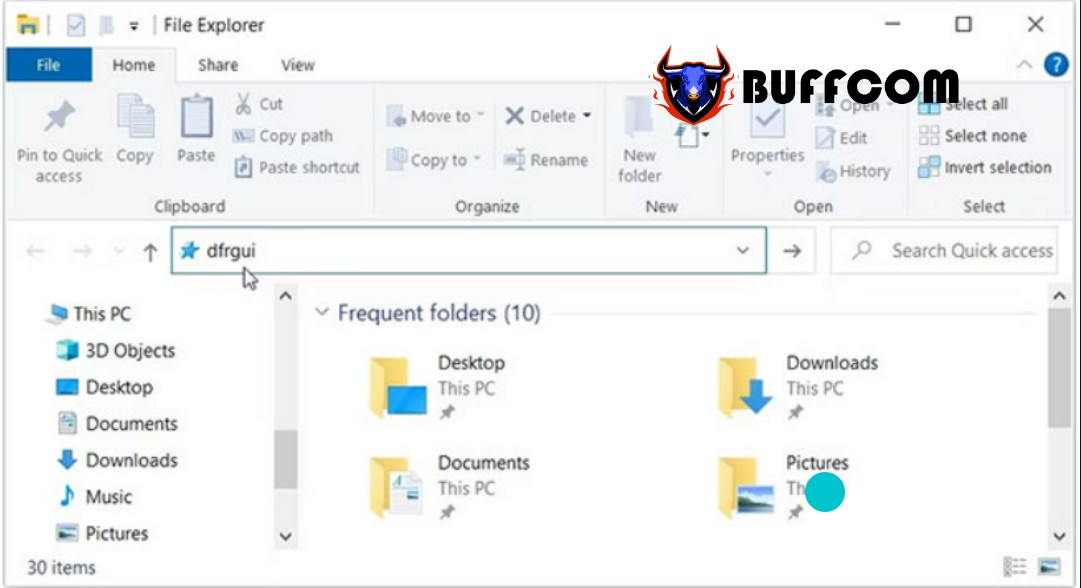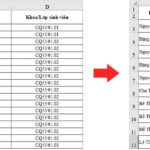10 ways to open Disk Defragmenter on Windows
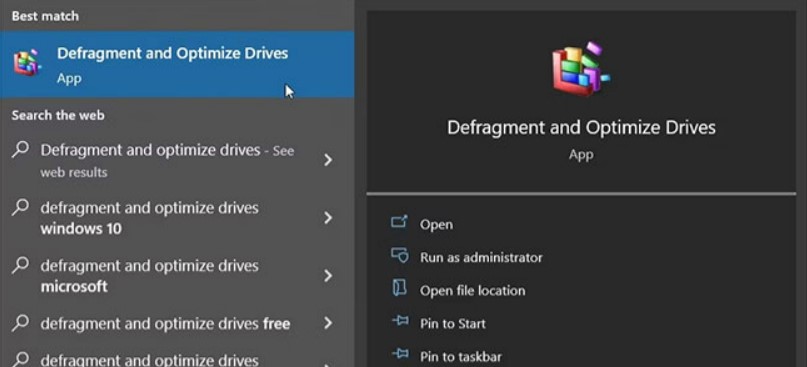
Have you heard of disk defragmentation before? It is a very useful process for organizing files on your hard drive so that they are located close to each other. After the data is organized through this process, your device can read that data easily, improving the performance of your PC.
To perform disk defragmentation, you need to use the Disk Defragmenter application. In this article, Buffcom will show you how to open Disk Defragmenter on Windows.
1. Use the search bar in the Start menu
The search bar in the Start menu allows you to easily access almost any application on your Windows device. So this is how you can use it to open the Disk Defragmenter application:
Press Windows+ S or click on the search icon in the Start menu on the taskbar.
Type Defragment and Optimize Drives and select the most relevant result.
Open the Disk Defragmenter application using the search bar in the Start menu.
2. Use the Run dialog box
You can also access the Disk Defragmenter application through the Run dialog box.
Here are the steps you need to follow:
Press Windows+ R to open the Run dialog box.
Type dfrgui and press Enter to open the Disk Defragmenter application.
Open the Disk Defragmenter application using the Run dialog box.
Note: You can also access third-party applications through the Run dialog box.
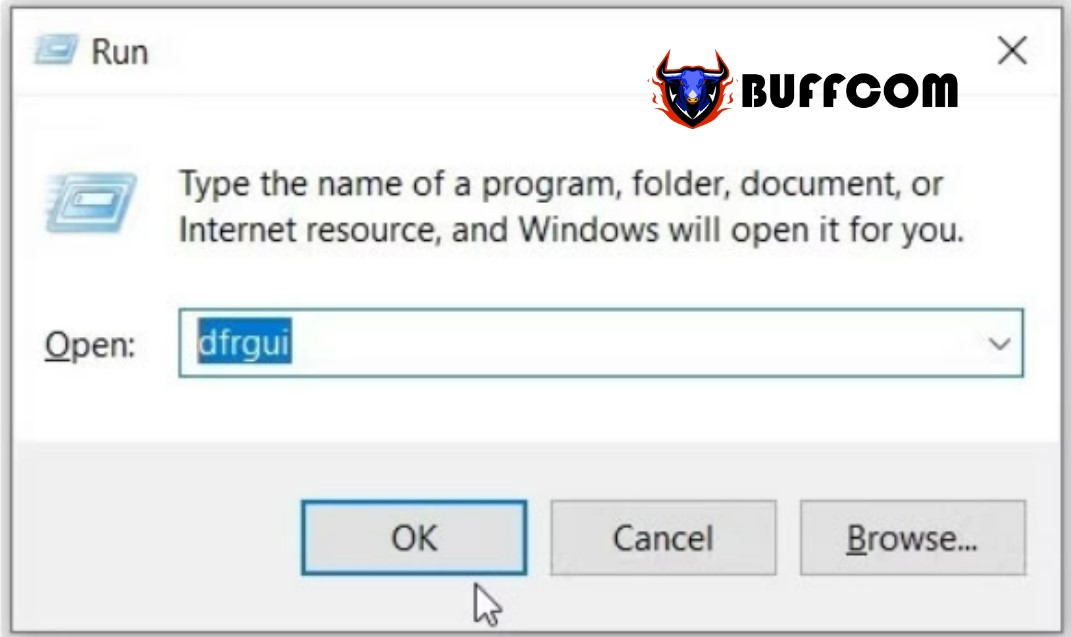
3. Using the Start menu
The Windows Start menu also helps you easily access applications on your device. So, here’s how you can use it to open the Disk Defragmenter application:
Press Windowsor click the Start menu icon on the taskbar to access the Start menu.
Click on the Windows Administrative Tools folder from the left menu items.
Locate and click on the Defragment and Optimize Drives option.
Open the Disk Defragmenter application using the Start menu.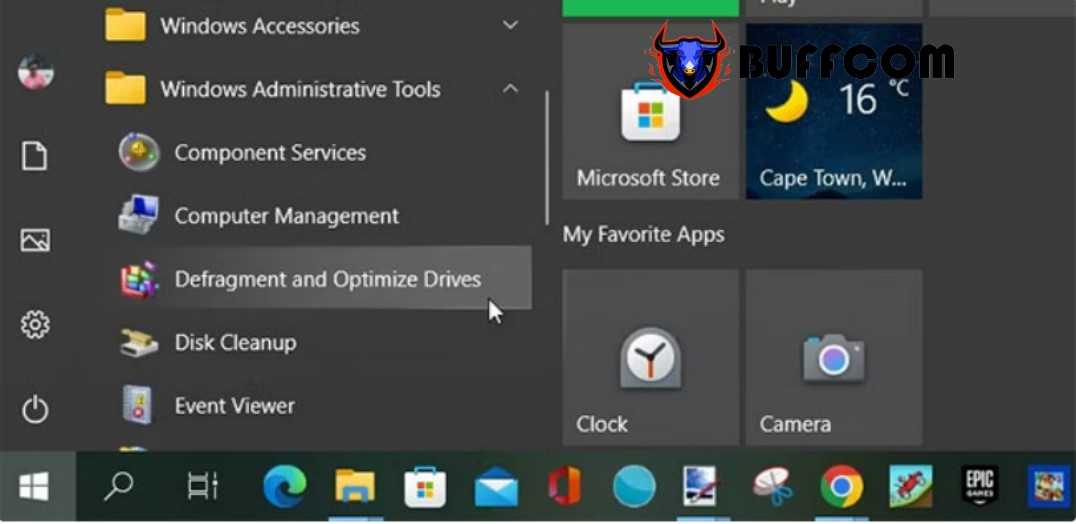
4. Using the File Explorer Address Bar
You can use File Explorer every day to manage your files. Buffcom.net has mentioned it quite a bit in tips for managing and organizing computer files. The good news is that you can also use the address bar of this tool to open various other applications.
Here’s how you can open the Disk Defragmenter application using the address bar of File Explorer:
Press Windows+ E to open File Explorer.
Type dfrgui into the address bar of File Explorer and press Enter to open the Disk Defragmenter application.
5. Using System Settings
System Settings can help you troubleshoot almost any issue on your Windows device. Interestingly, you can also use System Settings to open software programs on your PC.
Here are the steps to open the Disk Defragmenter application using System Settings:
Press Windows+ I to open System Settings.
Type Defragment and optimize your drives in the search box, then select the related option.
Open the Disk Defragmenter application using System Settings.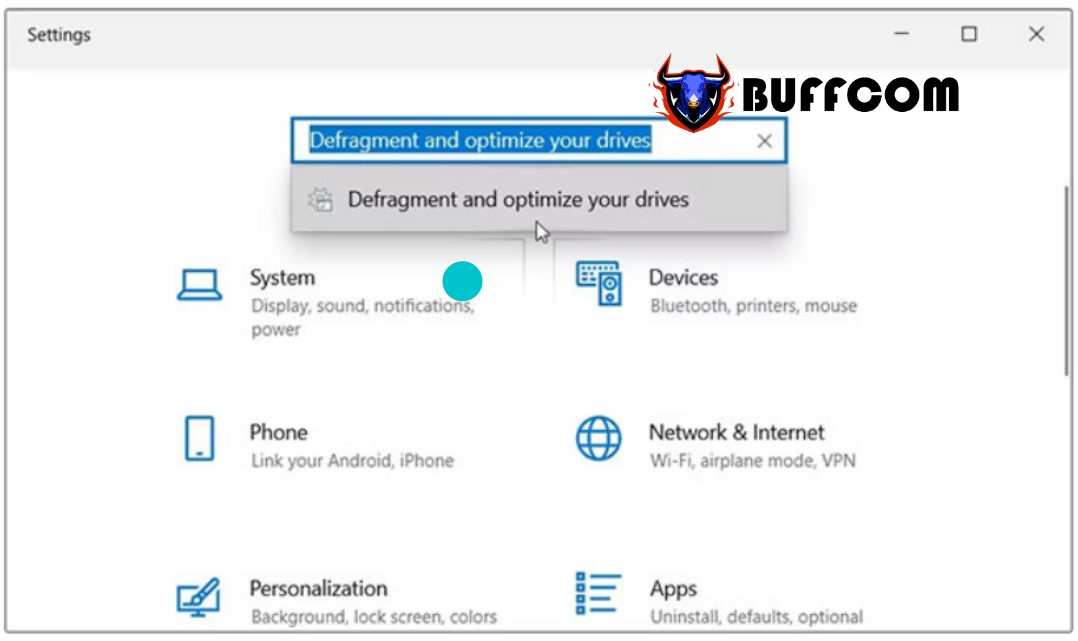
6. Using Task Manager
Task Manager helps you analyze the performance of your PC or force close problematic programs. Now, the best part is that you can also use this tool to access almost any application on your Windows device.
Here’s how you can open the Disk Defragmenter application using Task Manager:
Type Task Manager into the search bar in the Start menu and select the most relevant result.
Click on the File tab and select Run new task.
Type dfrgui into the search box and press OK to access the Disk Defragmenter application.
Speaking of Task Manager, did you know that there are multiple ways to force close a program without using Task Manager?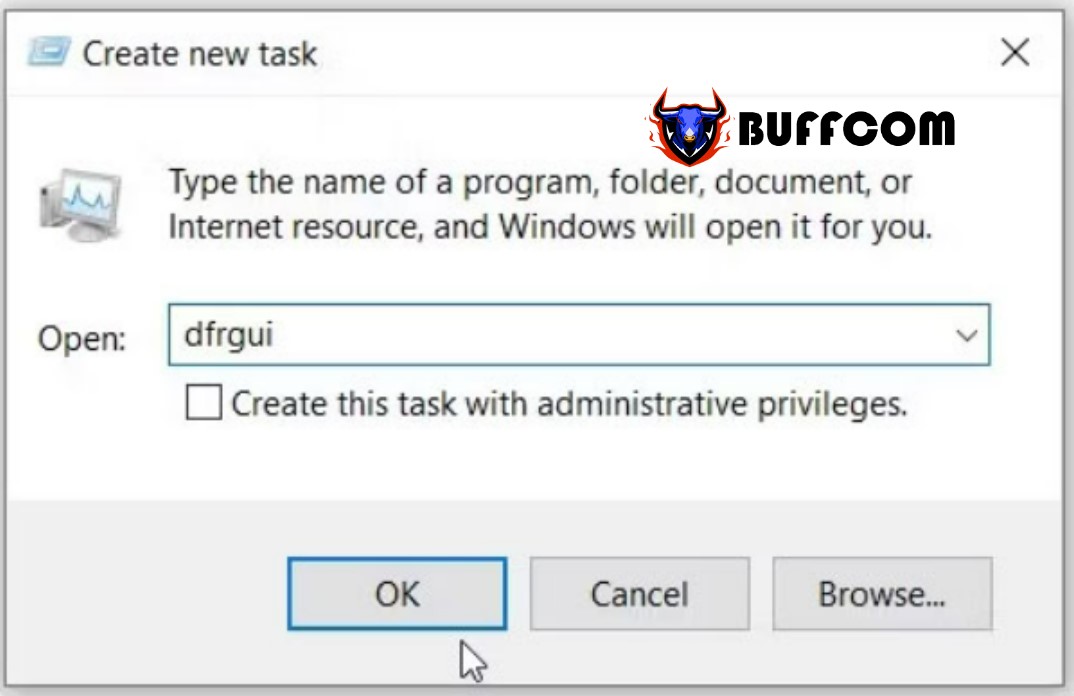
7. Using Control Panel
The Control Panel can help you troubleshoot various PC issues or access most applications.
Here’s how you can use this tool to open the Disk Defragmenter application:
Press Windows+ R to open the Run command dialog.
Type Control Panel and press Enter.
Click on the View by drop-down menu and select Large icons.
Select Administrative Tools from the menu items.
Double-click on the Defragment and Optimize Drives option.
Open the Disk Defragmenter application using Control Panel
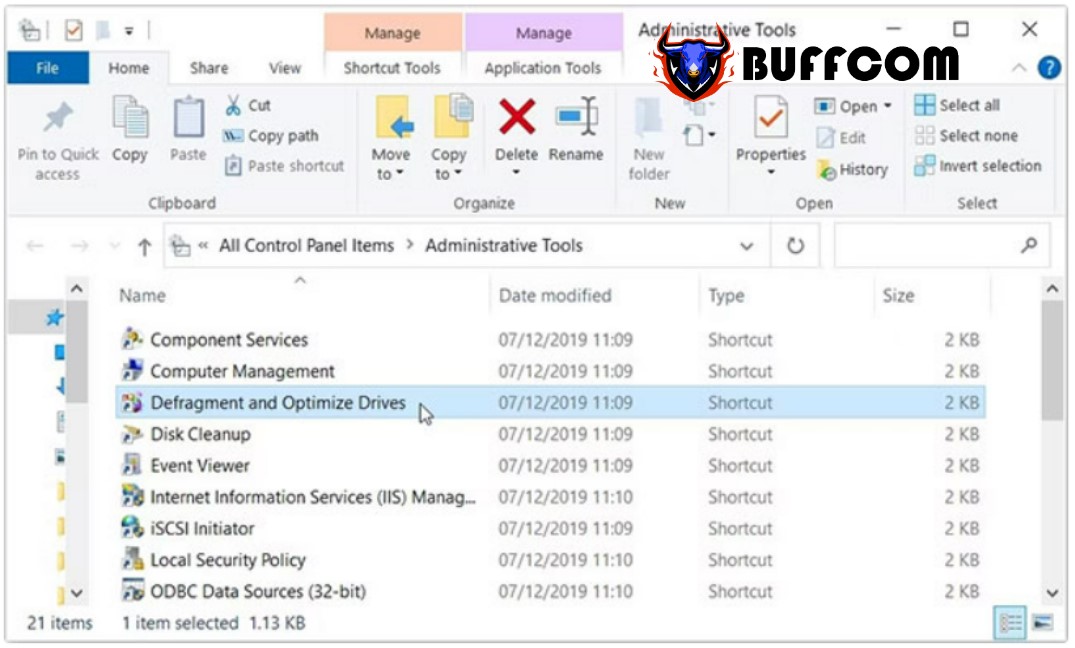
8. Using Command Prompt or PowerShell
Command Prompt and PowerShell are reliable when it comes to troubleshooting PC issues or configuring system settings. Now, you’ll be glad to know that these tools can also help you open various other applications.
Here’s how you can open the Disk Defragmenter application using Command Prompt:
Press Windows+ R to open the Run command dialog.
Type CMD and press Ctrl + Shift + Enter to open Command Prompt with admin privileges.
Type the following command and press Enter to open the Disk Defragmenter application.
dfrgui
Now, let’s see how you can open the Disk Defragmenter application using PowerShell:
Type PowerShell in the search bar in the Start menu.
Right-click on the most relevant result and select Run as administrator.
Type the following command and press Enter to open the Disk Defragmenter application.
dfrgui
9. Finding the Recovery Drive application in the System32 folder
You can access most applications on your device by clicking on the relevant files in the Windows System32 folder.
Here’s how you can open the Disk Defragmenter application from the System32 folder:
Press Windows+ E or click on the File Explorer icon on the taskbar to access File Explorer.
Select This PC on the left-hand side.
Double-click on the Local Disk (C:) option on the right and open the Windows folder.
Scroll down and open the System32 folder.
Locate and double-click on the Defrag file to access the Disk Defragmenter application.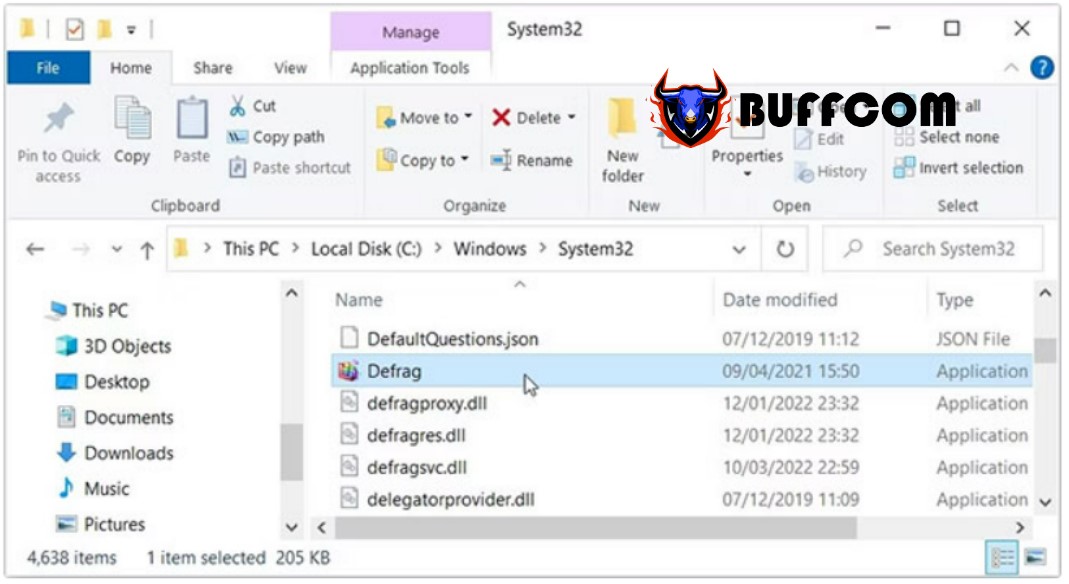
If you want to make the Disk Defragmenter application easily accessible, you should consider pinning it to the taskbar. To do that, right-click on the Defrag file in the System32 folder and select Pin to taskbar.
10. Using a desktop shortcut for Disk Defrag
Desktop shortcuts help you easily access applications on your PC. So, let’s see how you can create a desktop shortcut for the Disk Defragmenter application:
Press Windows+ D to access the desktop.
Right-click on an empty space on the desktop.
Select New > Shortcut.
Type %windir%\system32\dfrgui in the location box and click Next to continue.
From there, click on the Name box and enter Disk Defrag App or something similar. Finally, click the Finish button.
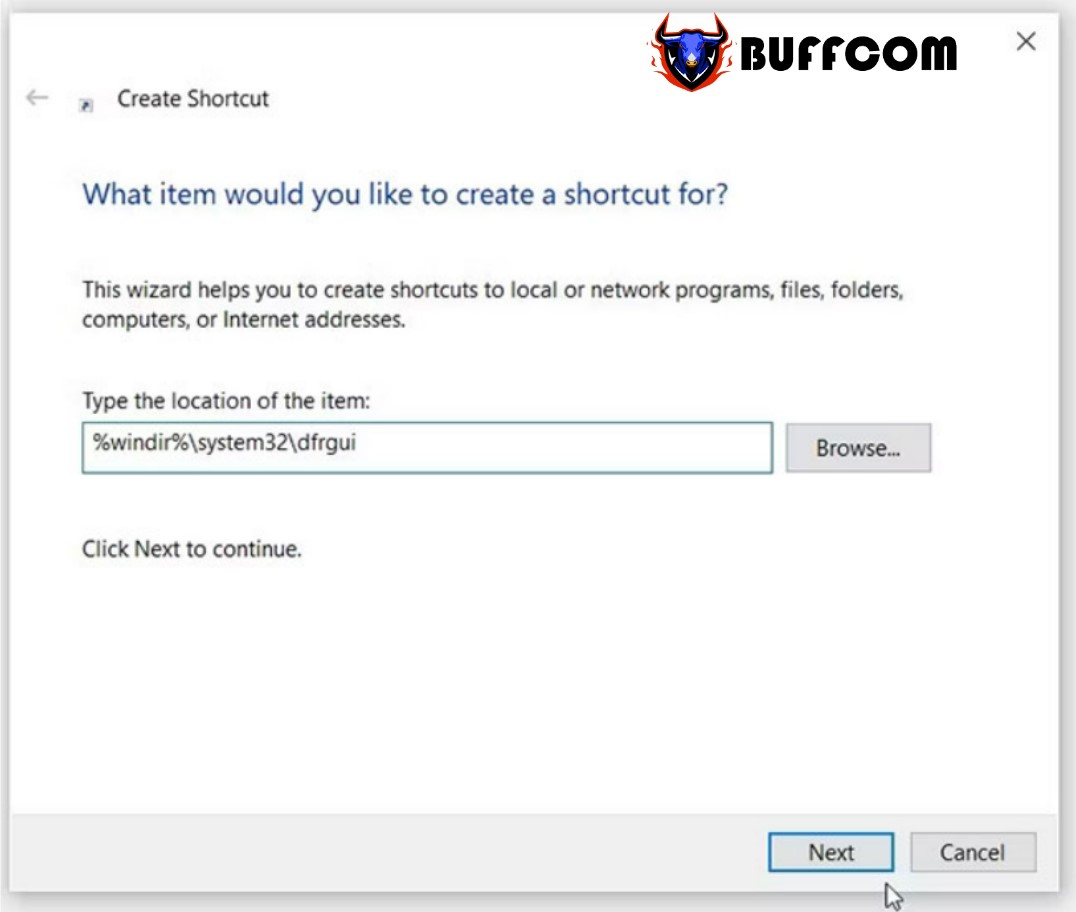
Now, you can easily open the Disk Defragmenter application anytime using the desktop shortcut you just created.

